|
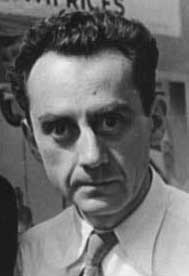
Man Ray
Man Ray's three submissions to the
Imagery of Chess show
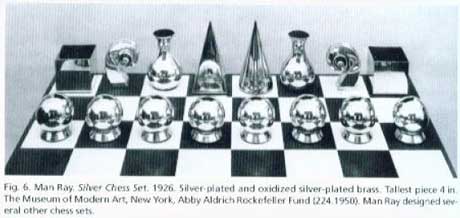
Silver Chess Set
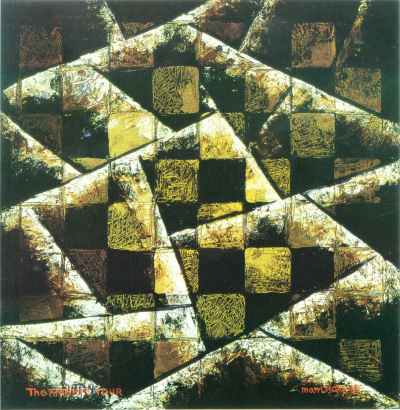
Painting - Knight's Tour
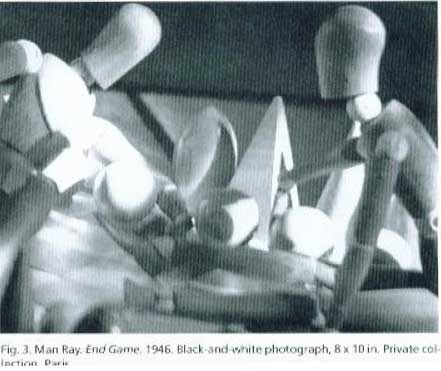
Photograph - End Game
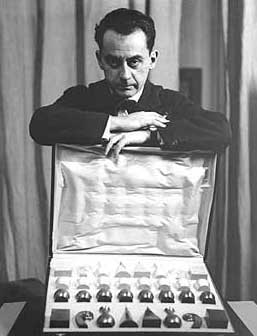
Man Ray tried hard to market his
chess set.
The Spring
and Summer of 1946 were marked by a new surge of creative activity in an area
that had always been of interest to Man Ray, the fabrication of chess sets. The
regular, geometric pattern of the chessboard had been a key image in Man Ray's
work since as far back as 1911., when he had made the Tapestry, as well
as other compositions based upon grids of squares. The famous Lips had begun as
a similar grip upon a photograph of Kiki's mouth, "It helps you understand the
structure, to master a sense of order," he wrote at the time. "When the ancient
masters composed a painting, they used to divide the surface into regular
squares."
With the chess sets made during this period, Man Ray
set out to build up a cottage industry of sorts, construction a first group of
thirty-six sets in wood and anodized aluminum and selling them as a edition,
signed and numbered on the base of the white king. Unlike Yves Tanguy's
rough-hewn approach to the project, chessmen cut from a broomstick, Man Ray's
were cast firmly in Deco mode, sleek and minimal. The bishop's mitre was reduced
to a Brancusi-like curve with a V-incision at the top; the knight's steed evoked
by a quarter-circle arc with an eye-hole drilled through it; the rook's castle a
rectangle on end with a crisscross incision. "The art galleries have handles it
for me," he told Elsie, "retailing for $60.00 and giving me $40. Of course, if
produced in quantity, they will sell cheaper and many more people will buy." He
had also managed to interest department stores on the West Coast in marketing
the sets. By fall, Man Ray had developed enough momentum to commission fifty
more sets in aluminum. The endeavor gave him a much-needed lift, allowing him to
mass-produce a product straddling art and design without compromising his
principles about either.
-Man Ray, American Artist by Neil Baldwin
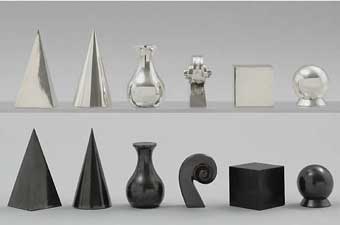
silver set
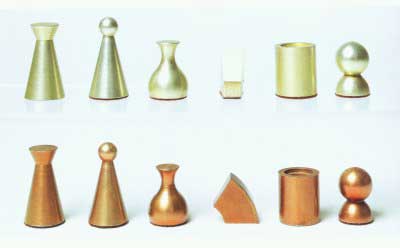
aluminum set
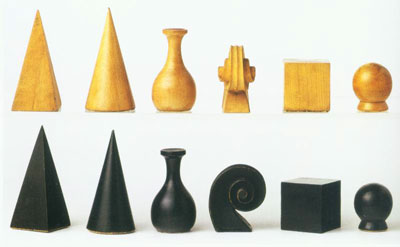
wood set
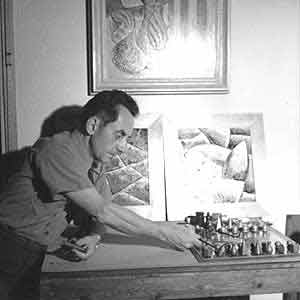
Man Ray with his chess set 1946
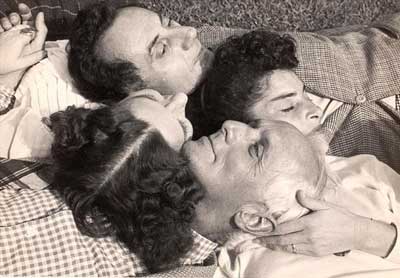
clockwise, left to right: Juliet Browner, Man Ray, Dorothea
Tanning, Max Ernst
Juliet Browner was a Bronx
pharmacist's daughter. Her mother mother was incapacitated, leaving Juliet to
fill the void by helping to raise her five younger brothers and younger sister.
She had worked as a model during the W.P.A and studied dancing under Ray Piazza.
She once had a brief affair with the Dutch painter Willem de Kooning. Man Ray,
who was leaving NY for LA in 1940, was asked by a young lady, Elsa Miler,
to phone her friend, from dance school, when he got there and possibly give her
a job, since the only employment she could find was being a part-time nanny
which didn't pay enough to live on. Elsa's friend was hoping to earn enough to
buy a train ticket back East. Man Ray called Juliet Browner, as he had promised,
and immediately became smitten by her and she by him. After they married, she
would call herself Juliet Man Ray.
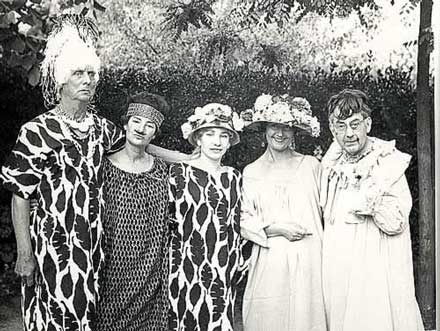
Sometime after their double wedding Ernst,
Browner (Lee Miller?) Tanner and Ray goof around androgynously
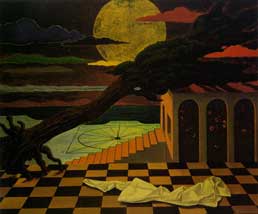
Night Sun Abandonned
A chess-themed Ray painting
|

